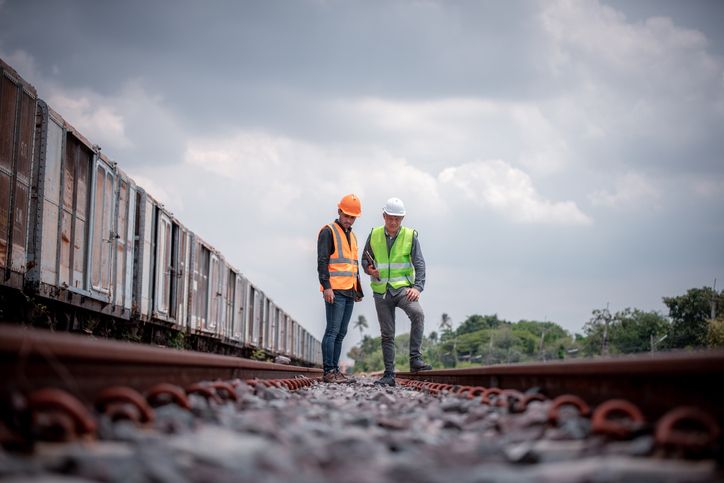CREOSOTE EXPOSURE
Toxic Exposure Lawyers
Investigating coal tar pitch and creosote exposure cancer claims on behalf of plaintiffs nationwide
Our legal team has filed numerous toxic exposure cases after a personal injury results from acute or chronic exposure to toxic materials or chemicals at the workplace. Tens of thousands of workers in various industries are unwittingly exposed to hazardous toxins at work sites, and later fall ill with a related condition or cancer. Creosote Exposure has been linked to the following conditions:
- Throat cancer
- Bladder cancer
- Esophageal cancer
- Lung cancer
- Stomach cancer
- Skin cancer
- Liver cancer
- Ovarian cancer
- Kidney cancer
Most occupational cancer cases we see involve career tradesmen and staff at high-risk work environments, though even a short duration of toxic exposure can cause irreparable harm. Particularly in heavy industry, a number of illnesses and cancers have been directly associated with a workplace exposure to specific materials, including:
- Creosote
- Coal tar pitch
- Silica
- Asbestos
- Benzene
- Diesel Exhaust
Victims and plaintiffs across the country have filed creosote exposure lawsuits after they realize that their employers may have known of the dangers but failed to properly protect workers from serious safety risks over their career. Employers can be held liable if they fail to educate employees, fail to provide safety gear and do not follow basic OSHA safety standards.
Can I File a Creosote Exposure Lawsuit?
Occupational toxic tort cases are common because industrial workers in certain industries are likely to face long-term exposure to a variety of toxins. This is to be expected by workers in the railroad, steel, oil & gas, refining, wood processing, rubber, and other industries.
It is a reasonable expectation for employers to provide proper safety equipment and respiratory protection to employees in the very least. For over fifty years, experts have been aware and have written reports about cancer clusters in some communities that have similar exposure levels to a particular toxin. This has happened in many railroad working communities where workers have been exposed to diesel, creosote, silica and benzene on a daily basis for decades.
And when a cancer is diagnosed and confirmed by a medical professional, legal action may be necessary to compensate victims for mounting medical costs, pain and suffering, lost wages, lost future earnings, and a reduced quality of life. The Lyon Firm takes pride in representing the American work force following serious, preventable injuries. We take on industrial injury cases in all fifty states, and have had success in reaching large settlements with large, negligent defendants.

CONTACT THE LYON FIRM TODAY
Please complete the form below for a FREE consultation.

TOXIC EXPOSURE AT THE WORKPLACE
Many corporate entities have known about the toxicity of certain materials used in the workplace for decades. Railway companies and other employers across the nation failed to warn workers of the health hazards and failed to properly protect workers, resulting in catastrophic toxic exposure, occupational cancer cases and lung disease.
The Lyon Firm is now investigating work injury claims for America’s workers sickened by coal tar pitch, creosote and other industrial toxins. Railroad workers, roofers and others who work with asphalt and coal tar creosote are at a high risk of later developing lung cancer and other related illnesses.
CONTACT THE LYON FIRM TODAY
Questions about Creosote Exposure
Creosote is a chemical byproduct of wood combustion that consists primarily of tar. The chemical is formed by the distillation of tar from wood or coal and is used as a wood preservative. Pesticide products contain creosote as an active ingredient to protect wood used for railroad ties and utility poles.
Both the International Agency for Research on Cancer (IARC) and U.S. Environmental Protection Agency (EPA) have concluded that creosote is a probable human carcinogen, which means it likely can cause cancer with enough exposure. Studies have found that workers in certain occupations that handle the material have developed very serious and often terminal health effects.
Studies in workers in some impacted industries indicate that breathing problems and irritation to the respiratory tract may occur. Studies in lab animals show that ingesting creosote damages the liver.
Long-term exposure of creosote in career roofers or railroad workers, for example, may increase the risk of cancer in in the respiratory tract, skin, lung, pancreas, kidney, scrotum, prostate, rectum, bladder, and central nervous system.
The U.S. Department of Health and Human Services (HHS) has classified coal tars, coal-tar pitches, and coke-oven emissions as carcinogenic to humans. Exposure to creosote has been linked to the following conditions:
- Throat cancer
- Esophageal cancer
- Lung cancer
- Stomach cancer
- Skin cancer
- Liver cancer
- Cancer of the scrotum
- Ovarian cancer
- Kidney cancer
- Bladder cancer
Workers in the railroad industry, road construction, asphalt, wood processing, aluminum smelting, or rubber industry may be at risk of chronic toxic workplace exposure.
If you or a loved one has been diagnosed with cancer following years of creosote exposure, you should contact our law firm immediately for a free consultation. You may be entitled to a rightful settlement, and it is important to file a claim as soon as possible.
Past railroad cancer cases have been successful when going to trial, when plaintiffs are able to prove that they were exposed to a variety of toxic materials that directly caused an illness. A Wisconsin jury, for example, ruled against the Union Pacific Railroad and awarded a former worker $7.5 million for cancer linked to his long–term exposure to creosote and other toxins.
That particular railroad worker served the railroad for over 30 years and was later diagnosed with acute myeloid leukemia. He claimed his cancer was due to the failure of his employer to provide protective gear despite knowing of the health hazards he faced. He alleged that he was exposed to toxic materials at his work sites, including creosote, lead and degreasing solvents. He was diagnosed with myelodysplastic syndrome and later diagnosed with acute myeloid leukemia.
Like many workers in rail yards, the plaintiff described regularly handling rail ties that were damp with solvents, creosote and other chemicals. He claimed that his employer only provided gloves and hard hats up until 1986.
-
-
Answer a few general questions.
-
A member of our legal team will review your case.
-
We will determine, together with you, what makes sense for the next step for you and your family to take.
-